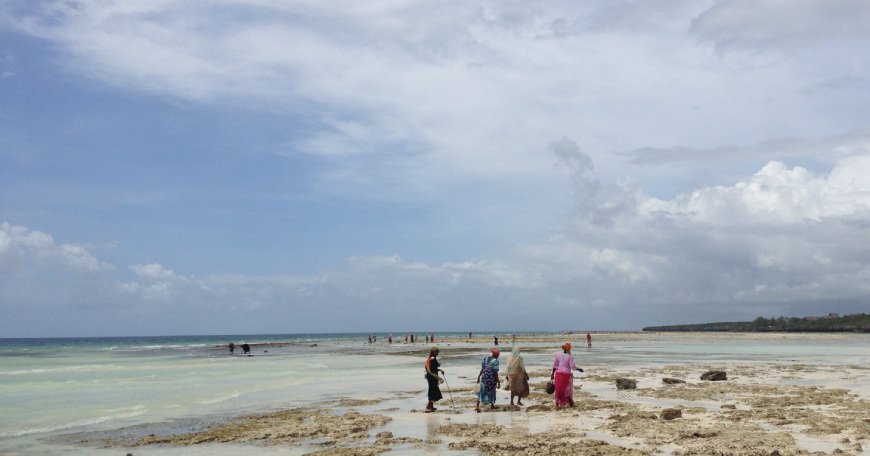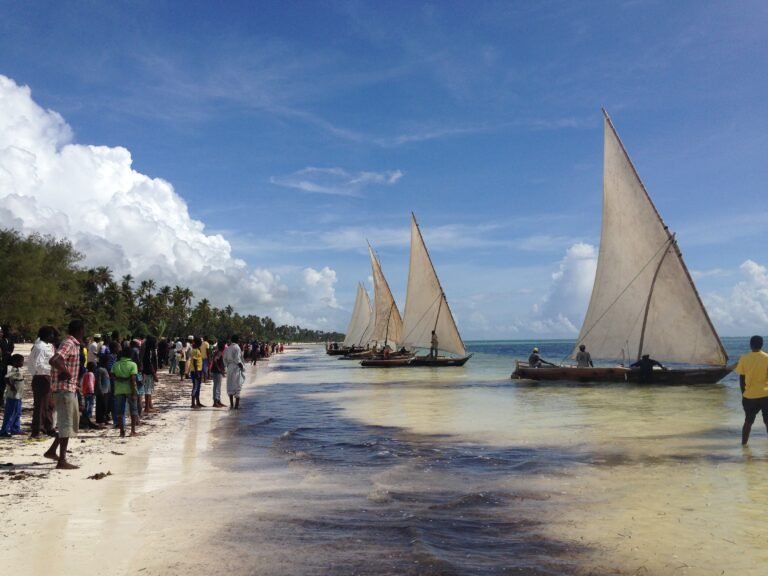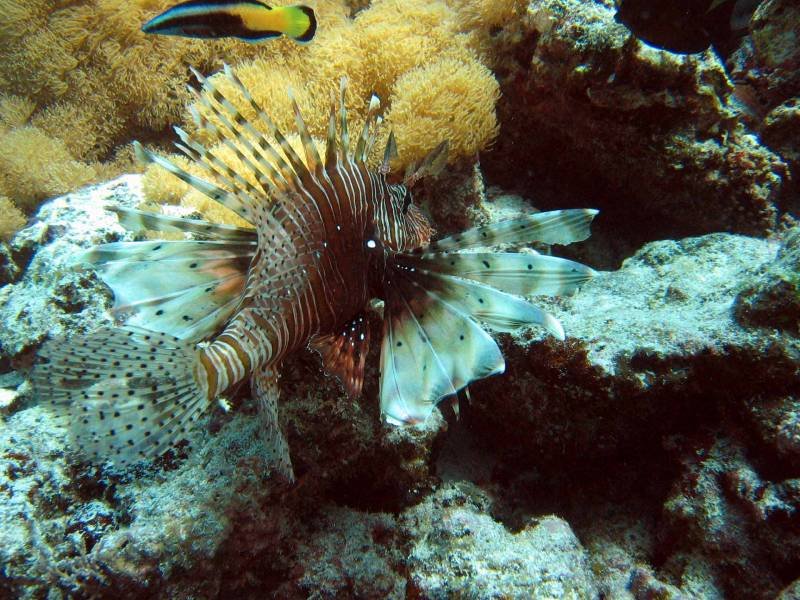
UNGUJA, ZANZIBAR
KARIBU ZANZIBAR
The place many of us call Zanzibar is actually known as Unguja by the local population. It is the largest island of the Zanzibar archipelago, which also comprises Pemba, its northern sister, Mafia and a myriad of small islets including Changuu, Tumbatu, and Mnemba. Zanzibar lies in the Indian Ocean, a mere 40km off of Tanzania. Over the centuries, traders from Arabia, Asia, and Europe have alternately intermingled with the local Bantu tribes and shaped its history. Enduring waves of trade in spices, metals and slaves have left their marks on the island but today Zanzibar has built itself a reputation as an idyllic honeymooning and an exceptional diving destination.
 Stone Town, the heart of Zanzibar City, was constructed during the 19th century and remains largely unchanged: labyrinths of alleys, palaces, mosques and old Arab houses will tell you its story. The narrow and bare streets, allowing only enough space for pedestrians, bicycles and the occasional bike, contrast in style with the elaborately carved wooden doors. The capital is a typical East African hub, rich in history, busy, and sometimes noisy. It’s a lively, vibrant atmosphere (so don’t expect calm and quiet). You will find some good diving a few miles off shore: dive boats will take you to the several wrecks close by and to Boribu, an impressive reef where you can spot whale sharks during the season.
Stone Town, the heart of Zanzibar City, was constructed during the 19th century and remains largely unchanged: labyrinths of alleys, palaces, mosques and old Arab houses will tell you its story. The narrow and bare streets, allowing only enough space for pedestrians, bicycles and the occasional bike, contrast in style with the elaborately carved wooden doors. The capital is a typical East African hub, rich in history, busy, and sometimes noisy. It’s a lively, vibrant atmosphere (so don’t expect calm and quiet). You will find some good diving a few miles off shore: dive boats will take you to the several wrecks close by and to Boribu, an impressive reef where you can spot whale sharks during the season.
The Fumba peninsula, south of Stone Town airport is definitely the most relaxed and friendly corner of the island. A few kilometres offshore is Chumbe Island: this tiny coral island, privately owned, is part of a marine park that has successfully preserved some of the most beautiful coral gardens ever. The reef crest being between 1-3 meters deep, snorkelers can see what is usually reserved to divers. There is a possibility to stay overnight and enjoy fully the natural environment. Although scuba diving within the Chumbe reef sanctuary is permitted only for research and filming activities, it is still possible to enjoy diving on the nearby reefs.
On the far north side of Zanzibar, the village of Nungwi has become the touristic centre of the island. The place has always been reputed for its dhow-building industry. However, over the last decade the ramshackle fishing village has become one of Zanzibar’s busiest beach areas.
Tumbatu island, is only two kilometers from shore and a ferry service (an open boat) insures the transit of goods and passengers to and from Mkokotoni village. However, the secretive island inflexibly keeps its distances; unless you have been invited by a local, you won’t be able to put foot on shore: Tumbatu isn’t open to tourism and its surrounding reef keeps it somewhat isolated from the rest of Zanzibar. However it is possible to dive the shallow waters around the mysterious island, when taking a boat excursion from Nungwi.
The east coast of Zanzibar has some of the most beautiful powder-white beaches. There are a variety of places to stay for all budgets, from Matemwe to Jambiani and you are minutes away from most of the dive spots on the barrier reef. Dive centres offer regular diving and snorkeling trips around the private Mnemba Atoll. Resident dolphins regularly come play in the wake of the boats waves and it is not uncommon to see them underwater while diving.

The Michamvi Peninsula and the South East corner of Zanzibar that stretches south of Chwaka Bay are very similar in character to the east coast. The area has the same pristine beaches lined by coconut trees, good diving opportunities and …plenty of space. The area was once the busiest beach scene of the island but the low budget travellers have moved to the north, leaving this part of the coast to the kite surfing fanatics. The reef is amazing and you may have some unexpected and unforgettable encounters.
HOW TO GET THERE
By air: Several airlines offer international flights directly to the island; search flights to ZNZ. Zanair, Tropicalair, Flightlink, Precision Air and Coastal offer domestic air charter and scheduled flight services from the main cities in Tanzania .The flight from Dar El Salaam is 20-30 minutes. Arriving by air, you will need to have
By sea: If you plan to arrive by sea, hydrofoils and classic ferries cross regularly the 60 km of water separating the island from the Tanzanian capital. Azam Marine fast ferries can be booked online; they cross the Zanzibar channel in 1 hour 40minutes; expect twice this time with a regular/cargo ferry. If you have already been traveling around in the region, you might opt to arrive from Tanga. Connections are also possible to and from Pemba.
USEFUL TIPS
- Zanzibar is part of the United Republic of Tanzania, so if you are previously entered the country, you will use the same visa for Zanzibar. Otherwise, you can either apply for a visa online, or directly when arriving at the airport. Cost for a single entry visa = 50 us$.
- Even though, the local currency is the Tanzanian Shilling , non resident foreigners are requested to pay their ticket in us$, so keep some green bills handy! Remember that Tanzania and Zanzibar archipelago are predominantly Muslim and that the transport and consumption of alcohol are prohibited in public.
- The sea can be choppy in the afternoon, especially during wind season peak. If you are prone to seasickness I would definitely recommend the early departure time. It also gives you more time to find your bearings when arriving on the island.
- Even if you have decided to go for the total adventure, and wander to your desire, planning your trip is not a bad idea as public transports become scarce past afternoon. At this latitudes, the daylight is roughly from 6am to 6pm, throughout the year.

WHAT TO DO IN ZANZIBAR
Wander in the narrow streets of the historic Stone town, declared a UNESCO World Heritage Site in 2000. The visit of the vibrant, open-air market (preferably in the morning) will give you a colourful idea of the Zanzibari way of life. A tour around the spice plantations is a must: you will learn everything about clove, cinnamon and many other spices that gave the island its nickname. Zanzibar history has been heavily stained by slave trade and became a famous hub for this infamous practice; today you can visit the small dark dungeon-type cells of the old slave Market. In February, don’t miss the Sauti Za Busara music Festival, a six-day cultural extravaganza. Mid-July opens the doors of the festival of the Dhow Countries, an international Film Festival. If you Spend few hours in the Jozani Forest with the nearly extinct Red Colobus Monkeys that live here. These monkeys, native to the Island welcome you in the safety of the Jozani-Chwaka Bay National Park. This unique groundwater forest is also home to other endangered species such as the elusive Ader’s duiker. Go and spend time with the dhow builders of Nungwi who have preserved a traditional craftsmanship inherited from their Omani ancestors.
More than anything the island is a paradise for all water sports: big game fishing (most operators encourage the catch-and-release approach), kite surfing on the desert beaches of Matemwe and Paje, snorkelling on the pristine reef sanctuary of Chumbe island , boat sailing in the shallows of the laggons and last but not least: scuba diving!
Dolphins are a common sight around Mnemba Atoll and Kizimkazi, and with some patience you will get to observe them from few meters. At the end of your day, enjoy a sunset cruise on a traditional dhow. With a laid back lifestyle and a great range of dive sites Zanzibar has become a mecca for divers. Despite the on-going touristic development, it is still a relatively unspoiled paradise. From colourful coral atolls to wall dives, the beauty and the richness of the environment have elevated Zanzibar to the status of one of the best diving destinations.


